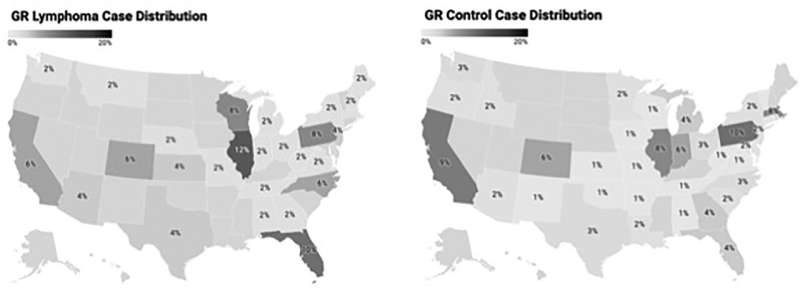This article has been reviewed according to Science X's editorial process and policies. Editors have highlighted the following attributes while ensuring the content's credibility:
fact-checked
proofread
New study finds limited correlation between canine lymphoma and proximity to environmental toxins

As awareness of the health risks associated with radon and fracking exposure in connection to cancer continues to rise in human medicine, a recent study explored these ties with multicentric lymphoma, a prevalent canine cancer. Surprisingly, the study did not identify significant correlations between living near sources of environmental toxins, such as fracking by-products and radon, and dogs diagnosed with lymphoma.
The results of this study were published in the Journal of Veterinary Internal Medicine using data from Morris Animal Foundation's Golden Retriever Lifetime Study, which enrolled dogs with multicentric lymphoma and matched unaffected dogs. Using special geospatial software, the researchers mapped the dogs' home addresses to U.S. Environmental Protection Agency radon zones and active fracking wells.
Ashleigh Tindle, a researcher involved in the project and a Ph.D. student at the University of Wisconsin-Madison, expressed surprise at the lack of correlation, given similar connections found in children with leukemia living near fracking sites. Acknowledging the study's limitations due to the small sample size and the lack of fracking wastewater data for some states, Tindle emphasized the study's role as an initial step in exploring the available information.
The study focused on county-level information over a decade but did not have data on individual home radon levels, which is a significant limitation. Additionally, the enrolled dog population was biased toward those who can afford veterinary care and seek a definitive diagnosis, while fracking wells tend to be near lower-income areas.
The research team recommends follow-up studies, including direct measurements of radon emissions and volatile organic compounds, which are pollutants generated by vehicle exhaust and industrial activities, and fracking in the homes of dogs with lymphoma. The team's next project involves analyzing urine and blood samples from the Study to understand how VOCs and herbicide exposures could alter a dog's DNA, potentially creating a biomarker of later lymphoma development.
"The next steps are to connect the dots between dogs that are exposed to environmental chemicals and whether there is evidence of DNA damage or other early hallmarks of cancer risk that could lead to lymphoma," Tindle said.
More information: Ashleigh N. Tindle et al, Environmental radon, fracking wells, and lymphoma in dogs, Journal of Veterinary Internal Medicine (2024). DOI: 10.1111/jvim.17021
Provided by Morris Animal Foundation




















